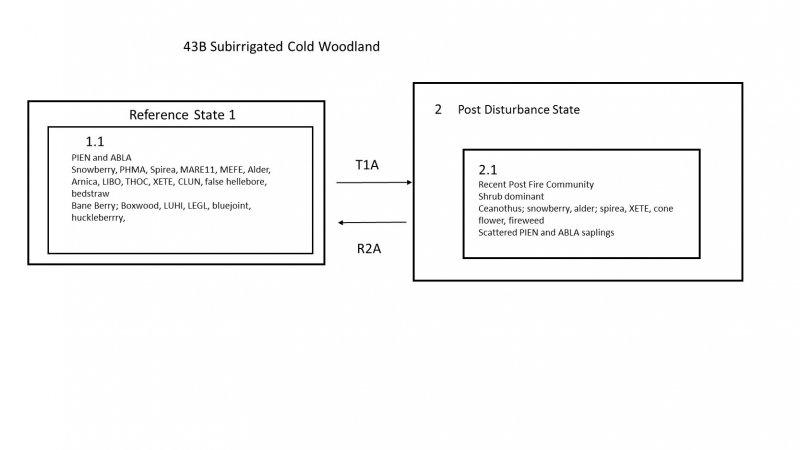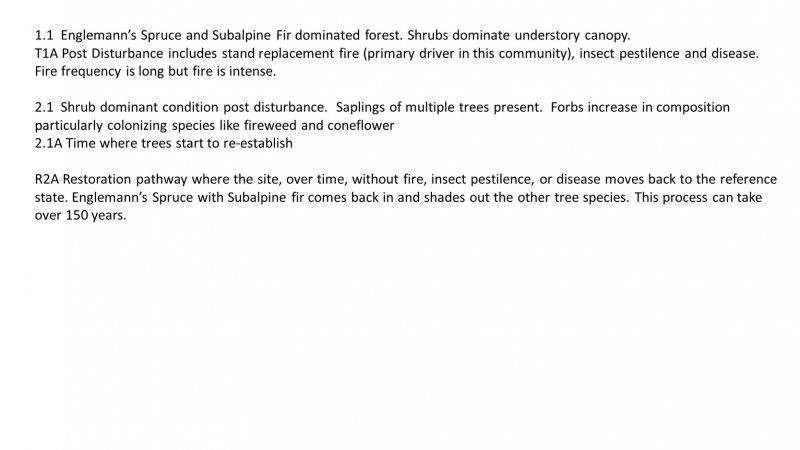
Natural Resources
Conservation Service
Ecological site F043BP906MT
Subirrigated Cold Woodland Group
Last updated: 3/01/2024
Accessed: 12/19/2025
General information
Provisional. A provisional ecological site description has undergone quality control and quality assurance review. It contains a working state and transition model and enough information to identify the ecological site.
MLRA notes
Major Land Resource Area (MLRA): 043B–Central Rocky Mountains
The Central Rocky Mountains (MLRA 43B) of Montana occupy some 28,850 square miles and exist primarily in Central and SW portions of the state. The climate is extremely variable with precipitation lows of 9 to 100 inches per year and frost-free days of less than 30 to over 110 days. The geology of the region is also highly variable. The combination of variable climate and geology create a complex relationship of plant communities. MLRA 43B elevations typically exist between 6000 and 12,799 ft at Granite Peak (the highest point in Montana).
The Continental Divide runs through this MLRA effectively splitting its watershed to contribute to either the Missouri River to the East and the Columbia River to the West.
Ecological site concept
• Dominant Cover: Forest
• Site receives additional water
• This site occurs on low terraces adjacent to flood plains of perennial or intermittent streams (though not in the floodplain), near springs and seeps, or other areas having a permanent or perched water table.
• Seasonal high water table within 40” (approx. 100cm) of soil surface.
• Moisture Regime: udic
• Temperature Regime: cryic
• Soils are
o Not saline or saline-sodic
o Moderately deep, deep, or very deep
o Typically less than 5% stone and boulder cover (<10% max)
• Area of rugged mountain, hills, plateaus, and valleys of the Central Rocky Mountains in Southwest Montana.
• Parent material is alluvium, colluvium
• Elevation Range: 6000-10000 ft
• Slope: 0-15%
Associated sites
| F043BP909MT |
Upland Cold Woodland Group The Upland Cold Woodland is a neighboring site slightly above the Subirrigated Cold Woodland on the landscape. The two sites may have slight overlap in tree species however their hydrology, state and transition models, and core plant communities are distinctly different. |
|---|
Similar sites
| F043BP907MT |
Subirrigated Cool Woodland Group The Subirrigated Cool Woodland site shares a similar state and transition model and has some plant community overlap. |
|---|
Table 1. Dominant plant species
| Tree |
(1) Picea engelmannii |
|---|---|
| Shrub |
(1) Alnus incana |
| Herbaceous |
(1) Calamagrostis canadensis |
Click on box and path labels to scroll to the respective text.

